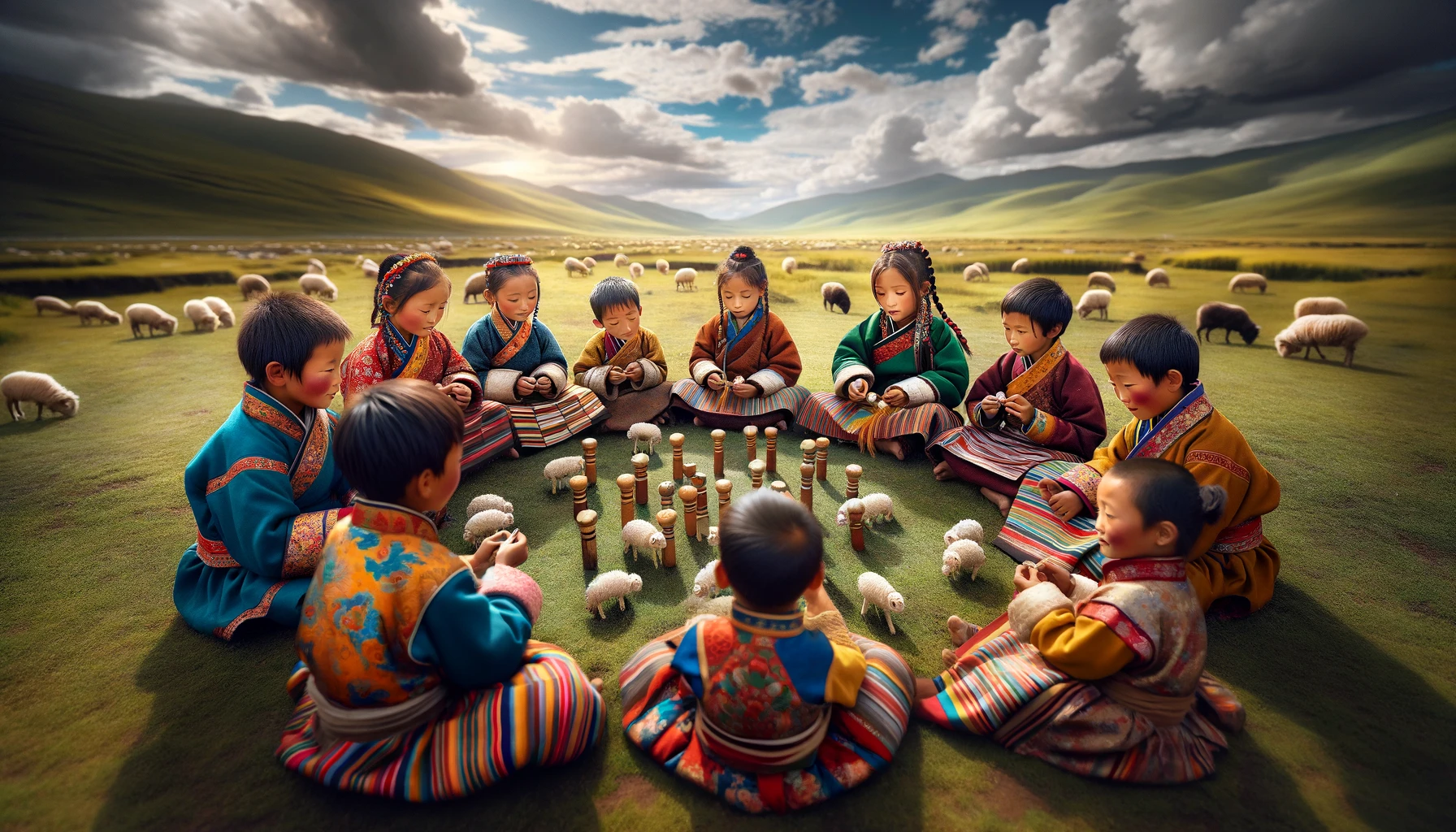Explore the charm of ‘Ajue’, a traditional toy treasured by Tibetan children long before modern toys like ‘Ultraman’ entered their world. ‘Ajue,’ a term in Tibetan for sheep ankle bones, has been a beloved plaything, deeply embedded in the cultural fabric of the Tibetan Plateau.
The Origin and Types of ‘Ajue’:
Children living on the Qinghai-Tibet Plateau ingeniously turn sheep ankle bones into toys, dividing its four sides to represent different animals like horses, donkeys, goats, and sheep. The ‘Ajue’ comes in two main types:
- ‘Si Jiu’: These are bones from sheep that died accidentally, considered to be of lower quality.
- ‘Sang Jiu’: Derived from slaughtered sheep, these are regarded as superior in quality.
Material Preference and Game Participants:
Most locals avoid playing with ‘Si Jiu,’ preferring ‘Sang Jiu’ or even the rarer ‘deer ankle bones’ and ‘blue sheep ankle bones,’ known for their durability and lustrous texture. Games typically involve two to several players, commonly played in groups of three or four. The best players often personalize their ‘Ajue’ with their favourite colours.
Playing ‘Ajue’ in Tibetan Rural Areas:
‘Ajue’ games are most frequent in the Tibetan rural areas during winter. This season offers more leisure time and coincides with the traditional slaughtering period, making it the peak season for ‘Ajue’ games.
The Structure and Rules of ‘Ajue’:
An ‘Ajue’ has six faces: the top being the ‘horse,’ bottom the ‘donkey,’ left the ‘sheep,’ right the ‘goat,’ front the ‘Garuda,’ and back the ‘dog’s rear.’ In the hierarchy of the game, the order of horse, donkey, sheep, and goat denotes the rank. Hitting the ‘Garuda’ or ‘dog’s rear’ requires a restart of the game.

Although ‘Ajue’ can be played in many ways, there are four main types:
Ajue: A Timeless Tibetan Children’s Game – Rules, Variants, and Traditions
Dive into the world of ‘Ajue,’ an ancient and beloved game among Tibetan children. This unique game played with sheep ankle bones, has evolved over millennia and remains a significant part of Tibetan youth culture.
The Various Forms of ‘Ajue’:
- One Against Many: This popular format sees children sitting in a circle, with different versions of play:
- Higher-ranked players hitting lower-ranked ‘Ajue.’
- One ‘Ajue’ against multiple from different groups or types.
- Striking similar kinds or those from the same group. Withdrawal from the game is often frowned upon, emphasizing the importance of commitment.
- Line Drawing Method: Players place an equal number of ‘Ajue’ at a certain height and draw a semi-circle on the ground. Players then take turns trying to knock the ‘Ajue’ off the wall from a distance. Success depends on hitting the opposite side (horse vs. donkey, sheep vs. goat) and staying within the circle.
- Wall Method: Participants throw their ‘Ajue’ at a short wall lined with others. Each ‘Ajue’ knocked down counts as a point, but failing to knock any down results in placing one’s own ‘Ajue’ on the wall as a target.
- Sequential Play: This method involves players following a specific order (horse, donkey, sheep, goat) with no distance restriction. The game continues until a player misses their target, often accompanied by penalties.
‘Ajue’ Rhymes:
To enhance the game’s atmosphere, different regions have developed unique ‘Ajue’ rhymes. In Lhasa, the chant goes: “Mighty Ajue, no one can compete, better go home.” In Gyangtse and Panam, it’s: “A string of Ajue, a hundred strong, hurry and grab them.” These rhymes vary from challenging opponents to encouraging oneself.
Conclusion:
‘Ajue’ is more than just a game; it’s a window into the historical and social changes in Tibetan society. This folk entertainment for Tibetan youth, through its various forms and playful chants, mirrors the historical events and societal shifts experienced in Tibet. ‘Ajue’ stands as a testament to the enduring spirit and creativity of Tibetan culture.


















